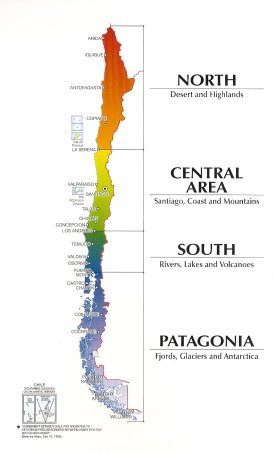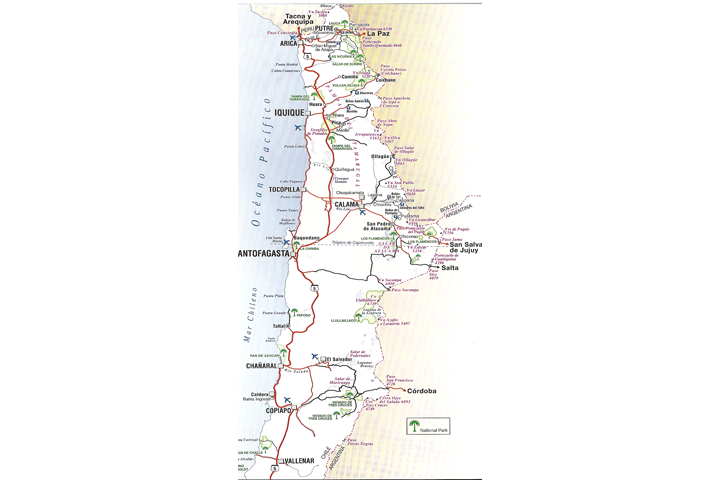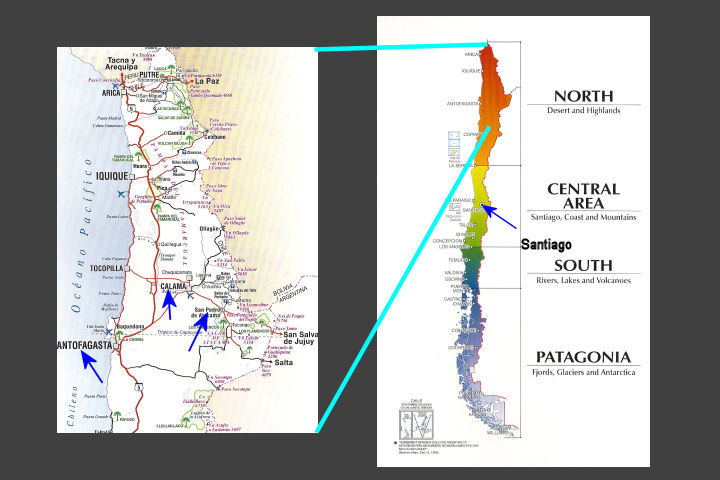I have a map 1043x2304 pixels, wxh. I planned to make a still for Vegas. It has boundary and road lines, and city names. When PSP initially displays it, it uses 24% and the larger city names can be read pretty well. When I resize it to 24%, lines and names degrade substantially. Is there some sort of smoothing difference between the two sizing methods? Both occupy an identical area on the PSP image area. I'm using tif.
It looks like maps are generally tough cookies to display for video work. Is there some preferred source for them?
+ Reply to Thread
Results 1 to 20 of 20
-
-
Aren't there different resize algorithms in PSP (I guess this means Paint Shop Pro)? I suspect it (as most graphics apps) defaults to fastest (=lowest quality) resize algorithm. Look for bicubic.
/Mats -
I'd recommend bilinear for downsizing
(as the case seems to be). Better try all available algorithms
and see which one gives you the best results.
Don't forget to save the resized image as 24-bit BMP (uncompressed)
or PNG (lossless compresssion). -
Yes, Paint Shop Pro. I used tif. Isn't it lossless? I'm scanning some images in with an HP6100, am not sure png is available. Although, PSP has png. Yep, on the HP too. I just looked. I scanned at 200ppi. Interestingly, PSP thinks the image is 300ppi.
Choices for colors are:
256
millions of colors (selected) 16?
256 Web Color Palette
...
B&W
From PSP Help:
Note: Bilinear, bicubic, and weighted average resampling are available only for greyscale and 16 million color images.
I see that I used Pixel Resize, the default. I just bicubic, and get deterioration. Ah, smart size worked pretty well. In fact, it looks like what is used for % size with the magnify tools. More playing suggests Smart was chosen as weighted.
I just put the result it Vegas, and did a full screen display. It looks pretty decent. Thanks very much. -
Coupla things...
You're doing yourself a disservice by not scanning at either 24bit color(or better) for color, or 8bit (or better) for greyscale. Later, if you actually wanted a 256color image, after the stuff has been done to it you downsample and dither for optimum LUT with that image.
Yes, TIFF (can be) a lossless format, but a resize algorithm is ALWAYS going to be a lossy function, whether up- or down-sizing (down being perceptually much better). That 200/300dpi this is a red herring, it can be adjusted without any REAL change to the image. That has to do with printed image size anyway, so doesn't affect what you're trying to do for video.
One thing I have noticed with some resize algorithms is that it is sometimes better to do multiple small fraction resizes as opposed to 1 large fraction resize (but not always).
Note: it may make more sense to NOT resize down but to do a full-size pan-and-scan to keep the thin lines from getting too small and "winking out".
Scott -
How is 24-bit achievable, bmp? LUT? full-size pan-and-scan, is that a Vegas term or is it something available in PSP (or other similar programs)? See scanned files attached. They're what I'm currently working with. Thin lines galore. (Not sure I can attach both. I think I've got the one with the whole country. The other is of the northern region, and may not be attached.
chile_north.tif -
Whoops. I see I should have used gif, jpg, etc, and probably reduced the size. Well, here's the thin line one in a smaller size and an approved format.

-
You will not be able to scale that TIFF down to 720x480 and have readable text -- no matter what scaling filter you use. You might consider the "Ken Burns Effect" to zoom and pan over the larger image rather than displaying the whole thing at once.
Many applications refer to 24 bit color as "truecolor". -
For that graphic, I'm not worried about the small city names along the map. I only posted it to show the thinness of the vertical and horizontal lines.
-
Resized with VirtualDub, Precise Bicubic (A=0.75), 4:3 NTSC DVD ready, about as good as you'll ever get:Originally Posted by solarblast

-
And this is what that image will look like when viewed on a 33-inch CRT:
1920x1440.png -
Yummin, Yiminy! Now I'm worried. Unfortunately, I haven't been able to test it since my one DVD player has been too busy, and the other won't play the stuff I produce from Vegas. Your view gives me a better idea what I'm up against while waiting for the DVD player.
There are really on 3 names on the map of interest and they will be highlighted with an arrow. Nevertheless, if something can be done, then it would be good. I may just have to sacrifice area for viewability.
I think pan-and-scan is out, since it goes against what I'm trying to show.
I'm attaching a file than expresses more clearly what I'm after. The area of interest is really a rectangle that pretty much bounds the 3 arrows, but goes to the Chile-Argentina border. The idea here is to show the viewer where the scene of action is relative to Chile itself. I probably need rectnagular swath on the map to the right, and the two aqua colored lines bounding it.

-
Yep, that's been slowly occurring to me while I ponder this. I may be able to get an image of the area with only a few names in it. I think the image on the right is doomed too. If this gets up on a 30" screen, even it will look mushy. I think I need stuff with more outlines than provided by attempts like these. That is, scanning the images from paper just isn't going to provide enough resolution in the end. So much for putting somewhat detailed stills into a DVD.
I'm a little concerned that even video I shot with my Sony DV8 camera isn't going to do well on a 33" TV screen. Although, now that I think about it, I did pretty well with it last year when I put it on a DVD. -
Yes, that's true. I was going to do a comparison image of the surface area of Chile vs that of Montana. Two Montanas equal one Chile. I gave up on it, and decided to use a rectangle about the shape of Montana, and a long rectangle with average width and length of Chile. It looks a little dopey. Google Earth may help get the idea of location across better than the stills.
-
You could always rotate the image (erasing and replacing the text) and just put a N--> in the corner.
Maybe what I said earlier wasn't clear enough, but at the time I also was talking about a KenBurns effect on a larger scale version.
re your other Q's: 24bit = 8bit/color primary = 16 million colors (must just be nomenclature you're not familiar with, but it is common), LUT = Look Up Table (how most all 8-bit color modes work, look it up).
What I'd do, IIWY:
Rescan at much larger dpi (and at 24bit)--yeah it'll be HUGE!, load into PSP and get ready to do lots of erasing. Rotate 90degrees. In Pshop, I'd make vector text layers, not sure/remember what's available in PSP (haven't used since the old Win3.1 version--I'm a Photoshop man through and through). Simplify you color options (try Posertization/ColorReduction) to make for a easier, solid background. Then Dither+Downsample to 8bitcolor (customize that ole LUT if you need to). Also save a copy resized to fit within regular TV aspect ratio (constrained to original AR), then pad with background color if needed to fill the screen. You may even want to think about doing a vector path trace of the country/states outlines so you can just easily do an exact resize to whatever your final zoom level(s) need to be.
Then, do a zoom/pan/crop effect in Vegas as slow moves to highlight each area of interest.
Have done lots of these, it looks alot more professional without all those distracting fine lines. (Also helps to have mild amount of bolded points of interest and elevation shadowing.
Yes, it can take lots of work-- but who is your audience? (Might be worth it)
Scott -
There are probably some rules about this stuff. For example, to see sharply a circle 1" in diameter on a 36" TV screen, you need a digital image of such and such metric dimensions represented by such and such size pixels. The same is probably true for some other projected area sizes, like a computer projection system. Possibly tables or formulas.
-
Once everybody gets to HD then yes, there probably are some simpler rules. However for SD there are too many physical factors to take into account. Picture tube technology is not as precise as LCD or Plasma, and you are working with a lot less data than is even held in the DVD image in many cases. And you aren't working with discrete pixels in the analogue world either. You have to deal with cross talk and colour bleed and all the rest of the fun that goes with the old ways. In short, you cannot do what you are hoping to do and expect it to work on a range of TVs. I know, for example, that I will get a much clearer image using smaller font (up to 30% smaller) on my TV than my brother will get on his. Same size screen, but his has a lower quality tube, and lower quality image processing.
Read my blog here.
-
Well, I found a couple of outline maps of Chile on the web that might help. Is there some (geometric) image effect that I could use the thicken the outline?
I see vectorization and other words above. I'm just not that into PS or PSP to use them effectively at this point, and have no idea if they would be effective for helping with a map outline. I'll play with PSP effects in the meantime to see if something there could be effective. A color filled outline with a few cities in text might work well.
Similar Threads
-
PowerDirector makes final DVD files, size larger than mpg file's size, why?
By Xor2 in forum Authoring (DVD)Replies: 4Last Post: 22nd Dec 2011, 18:29 -
File size differs from data size--HUH?!
By atoledo123 in forum MacReplies: 2Last Post: 9th Sep 2011, 14:19 -
How to fit the large size picture to the smaller size for print?
By coody in forum ComputerReplies: 7Last Post: 1st Apr 2009, 09:46 -
small video size, but showing incorrect size (too big)
By mandy in forum Newbie / General discussionsReplies: 1Last Post: 17th Mar 2009, 05:14 -
what is the standard size or need to resize background
By leinan in forum Newbie / General discussionsReplies: 4Last Post: 6th Jun 2007, 14:24




 Quote
Quote